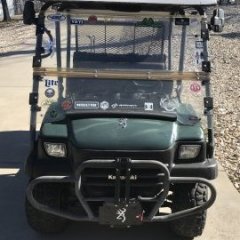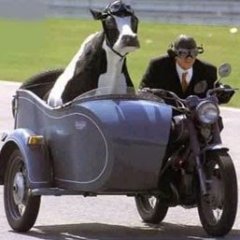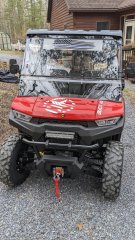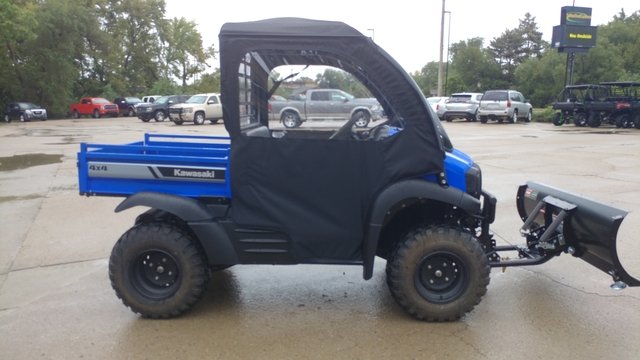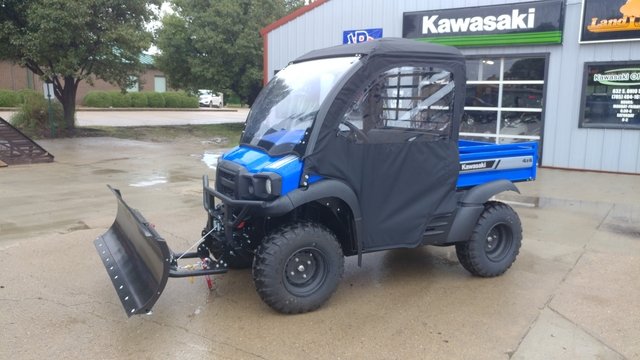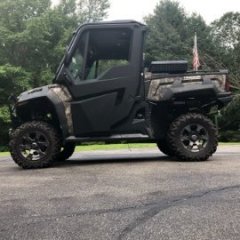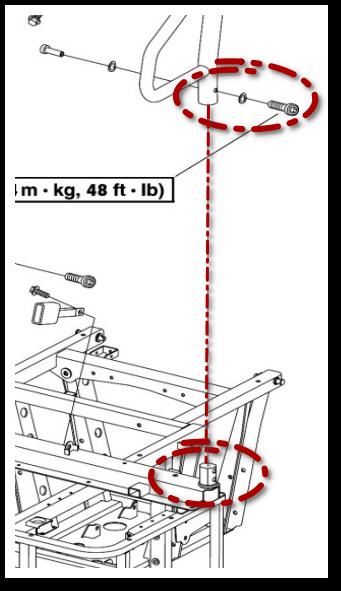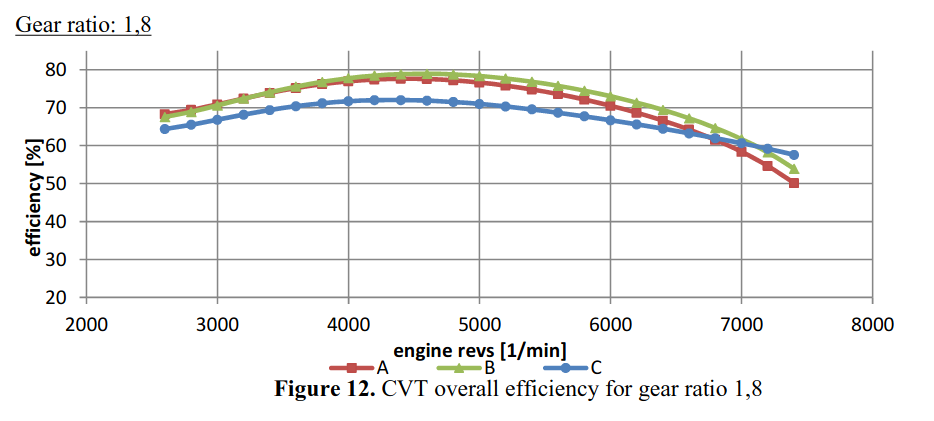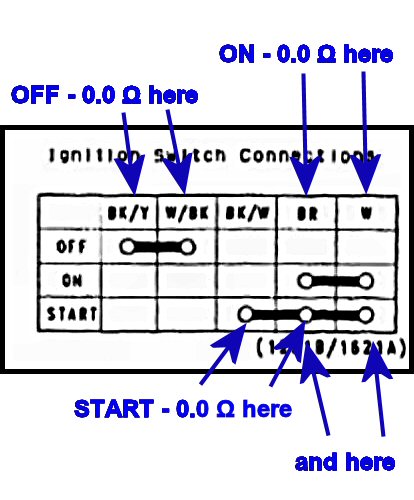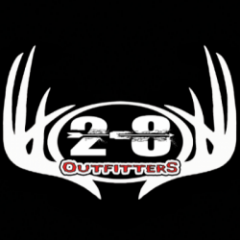Leaderboard
Popular Content
Showing content with the highest reputation since 02/28/2020 in Posts
-
Since I've seen some questions on this I took some pictures and will provide instructions on a valve adjustment for the UT400. This should be the same for the 550's and other various Coleman/Hisun single cylinder models with the cylinder slanted aft. I have seen several people ask of it is really necessary, and read several reports of valves being out of adjustment from the factory. My valves were .004" intake, and .010" exhaust with about 5 hrs on the machine. I've seen different numbers thrown around for factory spec, but I decided to go with 0.005". This is called valve lash. What is is is a gap between the rocker arm and the valve then the camshaft isnt opening the valve. Why does it matter? If it's too large the valve doesn't open all the way, if it's too small the valve dosent close. This can cause valve damage (overheating) as well as loss of engine power (burned fuel is going out exhaust rather than pushing the piston dow). Tools required : 5MM Allen wrench, 10MM box wrench, needle nose pliers, flat feeler gauge set, rags First you need to remove the fan cover on the passenger side. There is a cooling vent hose on the back side, remove the hose clamp and slide it off. From there there are 4x 10mm bolts holding the cover. The forward ones can be accessed from under the seat. Next remove the spark plug from the drivers side. Carefully wiggle the spark plug wire off. Grip it as low as possible and give it a little twisting motion as you pull it off to help free it. Its a tight fit for a socket, but there is a sheet metal wrench in the toolkit that fits it. Unscrew the plug and set it aside. This allows you to spin the motor over freely with no compression to fight. When you reassemble this is a good opportunity to switch to an NGK iridium plug for better performance/less fouling DR8EIX) Next you need to remove the intake and exhaust valve covers. The intake us the forward one. There are 3x 5MM Allen screws to remove. The Exhaust is the rear with 2x 5MM Allen bolts. Both covers have O-Rings instead of gaskets and are reusable. When you remove the rear be careful and use your rags as there will be oil that drips out. Next up we need to spin the motor over to top dead center. Grab each rocker arm and give em a little wiggle up and down. Spin the engine over by grabbing the fan with your other hand. Spin the engine over until both rockers have some wiggle and are loose. Once both rockers are loose slide the feeler gauge in like shown above. Try different feelers as needed to determine your starting spec. You should feel some drag but still be able to move the feeler without too much force. If you need to adjust, use the 10MM wrench to slightly loosen the locknut, then with the correct feeler gauge in place, tighten the top square nut while wiggling the feeler in and out. Once you have it right you need to tighten the 10mm lock nut without moving the square head bolt. Once the lock nut is tight recheck the clearance. That's it, button everything back up and make sure you have it all reassembled before running it again. If you find this helpful give me a thumbs up or comment. If you have any questions or need more help let me know. If there's interest maybe I'll do some more of these6 points
-
Hey Folks There are not a lot of good sources out there for troubleshooting and diagnosing ECU problems with the Massimo Buck, Bennche Bighorn, Bennche Cowboy, & Cazador machines that use the Delphi MT05 ECU. They are all basically the same with different badging, so I thought I'd share some info that I found during some searches. I was trying to help someone diagnose and repair a hard starting issue. The ignition coil was throwing a 0351 code. I discovered how to read codes without an OBDII code reader. The following procedures should help you check your fault codes and clear them if needed. Fault Code Troubleshooting for Delphi MT05 ECU on the Massimo Buck 400, Bennche Bighorn 400, Bennche Cowboy 400, and Cazador 400 *NOTE: The MT05 ECU is not really OBD 2 compliant. It is much more similar to an OBDI system. The MT05 ECU controls either 1 or 2 cylinder engines commonly found on Massimo, Bennche, and Cazador. Much of the ECU info was found here: https://netcult.ch/elmue/HUD ECU Hacker/Delphi MT05 Manual.pdf Delphi EFI System Design Delphi EFI employs 5 sensors to monitor engine performance. 1. Crankshaft Position Sensor 2. Coolant Temperature Sensor 3. Oxygen Sensor 4. Throttle Position Sensor 5. Manifold Air Pressure/Manifold Air Temperature (MAP/MAT) Sensor Delphi EFI employs the following system components. 1. MT05 Engine Control Unit (ECU) 2. Fuel Pump 3. Multec 3.5 Fuel Injector 4. Idle Speed Control Valve (Idle Stepper Motor) 5. Multec Ignition Coil 6. Fuel Vapor Canister Purge Valve Using the Digital Dashboard to Decipher EFI Trouble Codes In addition to commercially available diagnostic scan tools (Big $$$), you can use the engine warning light of the Siemens dashboard to diagnose most of your EFI problems. The digital dashboard receives signals from the MT05 ECU, and the engine warning light will flash a diagnostic trouble code (DTC) if the ignition key is switched on/off for three cycles. When you turn on the ignition, the engine warning light will illuminate, which indicates the EFI system is operational. After the engine is started, the engine warning light will extinguish if the EFI system is working properly. However, if the engine warning light remains illuminated, it indicates the EFI system is not working properly, and there is a system component failure. Deciphering Diagnostic Trouble Codes To read the diagnostic trouble code (DTC), open and close the ignition key three times in rapid succession, as follows: open/close—open/close—open. At this point the engine warning light will flash a DTC which indicates the fault in the EFI system. Refer to the attached fault code table to identify the corresponding problem. The engine warning light will emit a sequence of flashing lights. If the light flashes 10 times, the translated number is 0. If the light flashes one time, the translated number is 1, et cetera. For example, if the MAP/MAT sensor is disconnected, or the connector is shorted to ground, the engine warning light will flash in the following manner (This is an example only). The engine warning light will flash 10 times: The first number of the DTC is 0 After an interval of 1.2 seconds, the engine warning light will flash 1 time: The second number of the DTC is 1 After an interval of 1.2 seconds, the engine warning light will flash 10 times: The third number of the DTC is 0 After an interval of 1.2 seconds, the engine warning light will flash 7 times: The fourth number of the DTC is 7 The resulting DTC is P0107. NOTE: For the system I was helping to troubleshoot, I suspected an ignition coil failure due to the code that was thrown. When it was checked, it was flashing: 10, 3, 5, 1. The 10 represents a 0. So the actual code was 0351. After finding the code, the coil wire was checked and discovered loose at the spark plug. Once it was pushed fully on, the problem was fixed. Most likely, this problem was created after the owner had pulled the spark plug to check the gap. The ECU was rebooted using the procedures detailed below with no more codes being thrown. If there are other fault codes, the engine warning light will flash the next code in 3.2 seconds after finishing the first sequence. After all existing fault codes are flashed, the engine warning light will repeat the fault codes in a loop sequence, until the ignition key is turned off. To clear fault codes you either need an OBDII Fault Code reader and a Delphi 6 pin connector adapter cable that you have to order from China and wait 8 weeks…OR....you can simply reboot the ECU using the instructions detailed below. Rebooting the ECU Perform the following steps to reboot the ECU. 1. Turn off the ignition for 15 seconds. 2. Turn the ignition on/off for 5 cycles. Make sure each cycle lasts about ½ second, verifying the start of the fuel pump for each cycle. If the fuel pump doesn't start during any cycle, begin the entire reboot procedure from the beginning. 3. Turn off the ignition for 15 seconds. TPS (throttle position sensor) re-learn procedure after rebooting ECU. This should be done after replacing the TPS or the ECU....and it is advisable to check proper idle after rebooting an ECU too. Source: ECU Hacker (Reworded process slightly to make it a more sensible flow in my mind): 1. Turn the idle screw one full turn clockwise before starting 2. Start the engine, and run at low idle until the engine warms. Maybe a couple of mins. 3. Idle should be above 1500 rpm. If it isn’t, turn it up to 1700 then shut the engine off. Do another reboot of ECU. 4. Restart the engine and let it stabilize at 1700 rpm. Then turn the idle screen down to 1500 rpm and let it stabilize for a few seconds. Once it stabilizes, set to the final recommended idle speed for your machine. The placard under (or behind) your seat should show idle speed, valve adjustment, spark gap, etc. Typically the 390 cc engines in the "400" machines run at 1600 rpm idle. 5. Shut it down. Wait 10-15 seconds before restarting. The procedure is now complete. Final Notes: I have included pictures of an OBDII connector and the Delphi 6 pin connector in case anyone wants to go buy stuff off ebay or local parts suppliers and build a connector to use for an OBDII reader. But...you can save money and simply do the same thing with code reading and resetting using the check engine light on your dash. Some folks prefer to do it with code readers. Hope the information provided helps if anyone ever needs it but cannot find it in repair manuals. I discovered most of this in some motorcycle forums. The source for the diagrams is here: https://netcult.ch/elmue/HUD ECU Hacker/ Be advised: I am not a service technician. I do not endorse any manufacturers. I do not get paid to help, nor do I want to. This is just a hobby of mine. I enjoy working on things and solving problems. If you run into a weird problem that stumps you, give me a shout. I may be able to give you some ideas...or not. Just know, that troubleshooting thru emails can be challenging. The more info you can provide, the better. Otherwise, I will probably ask you a ton of questions. The good news is, the Delphi system used on these machines is essentially an OBDI and it is very simplistic. If you are methodical and patient, most of your "problems" can be figured out thru a process of elimination. Always go for the simple things first before throwing money and sensors at a machine. Take care - JT5 points
-
In order to connect with the ECU we need two cables. The first is a USB ODBII cable. HUD ECU Hacker’s documentation has a lot of different confusing options, but here’s what I went with and managed to get working, the cable is called “VAG KKL” it is a USB to ODB2 cable. It is available from a variety of sources for $10-15. The second thing we need is a “6 pin delphi to ODB2” adapter cable. It is also available for a similar price. In my case I ordered both from ebay, but there are other sources. Once we have our cable in hand we need to find the plug it in on your machine. My personal rig is a Coleman UT400, but the wire location should be similar for all Hisuns. My cable was located under the middle of the seat area. Just inboard of the battery, where the main wire harness split loom runs. The cable is a 6 pin (3x2) with a dust cap. Remove the dust cap and plug in the 6-pin end of the Delphi adapter cable. Note: When I was done, I left the 6-pin adapter connected, and zip tied it so it now runs to in front of the battery for easier access in the future. Next download and install HUD ECU HACKER DOWNLOAD Open HUD ECU Hacker on your PC It should prompt you to choose a driver to install. This particular cable uses the “CH340” driver (First choice on the menu) click to install, once installed hit the X in the corner to go back to the main page Once the driver is installed plug in the USB Cable, and plug the ODB2 end into the 6 pin adapter. The red led on the adapter should light up indicating it has power. Drop down and pick a com port on the main screen, it should show the VAG KKL adapter as a com port. Click connect on the main menu. It will pop up a bunch of fast scrolling text indicating it is connecting. Once connected you can click through the various tabs to see different data sets. The main menu also has the option to show fault codes, clear fault codes, reset the EPROM back to factory. The other function that may be helpful is recording a log file. You can record a log while operating the unit, and come back later and replay it to try to better diagnose what is happening. Within the various pages you will see the reading from each sensor. Sometimes a sensor reading will be off enough to cause running issues, but not enough for the ECU to realize its an issue. For example if the engine thinks it’s really warm, but its actually cold, it may not inject enough fuel to start. There are also more advanced functions, like adjusting fuel mapping, but that is beyond the scope of this tutorial. Full HUD ECU Hacker Documentation (Very technical reading) If you find this helpful give me a comment below or a thumbs up.5 points
-
White smoke is usually coolant leaking into the cylinder. Sounds like a blown head gasket to me.4 points
-
Just wanted to give update . It was the ecm. Put new one on and got spark immediately to front cylinder. Ran but smoking and no power. I checked back cylinder and no fire. Pulled coil to check with meter and found wire was not getting good connection where it plugs into coil. All good now . She will scream !!!. Next is to figure out why 4x4 switch wont turn. Thanks for all the imput....4 points
-
Hello to anyone who reads this. I am Jon and I own J&M Outdoor Power, a very small, small engine repair shop. I was approached by Coleman about 6 months ago to become one of their Warranty Centers. I recently received 3 different UT400's and a UT500 all with similar issues. These units range from 2 months to 2 years old. Customers state that the unit(s) was/were running fine, then heard a pop and a loss of power, two would no longer start. The two that would run would not achieve normal operating speed (around 20mph I would say) without redlining the RPMs. I quickly found that the Valve lash on each unit had become too large on some(both intake and exhaust) and too tight on one(just intake). After setting the gaps to .005(I found multiple different people suggesting bigger and smaller gaps, but no definitive Coleman Spec number yet) every unit starts, runs, and achieves top speed without issue. I don't know how many others have come across these issues, and I wanted to get something out on the web for others in the same predicament. Please let me know if you have had similar issues. Edit: I realize that this will not be a fix all solution for this issue, as the oil level and condition should be verified before moving to the valves. Many times improper oil conditions will cause valve lash to change. These units all have good oil and proper oil changes.3 points
-
Hello again! I now have a pretty good running Coleman UT400 after a top end rebuild, wet clutch rebuild and a repaired crankcase... ! It plows snow great, but I was also having the jumping out of gear problem, mainly reverse, but a couple times out of forward. I would quickly place it in N and then let the engine idle down and shift again. This worked most of the time. I did some research and found that some have modified the shift linkage. The problem with just adjusting the shift cable is that it really NEEDS more throw, not an adjustment. From what I've read and viewed on the Internet, the linkage arm needs to be about 3/4" longer to gain more throw in both directions. On YouTube, the guy had to remove the shift linkage hole trim and notch the side of the dash to get the shift linkage off the pivot pin. BUT this is NOT necessary. When the "E" clip has been removed and you fish it out of the firewall somewhere, the shift lever is now loose. I had to pop the top of the shift knob off, remove the retaining screw and then heat the lower portion of the knob to get it to come off the lever. Once you have the shift lever loose, push it towards the right to slide it off the pivot shaft. But it won't come off just yet. Use a small pry bar/screw driver and slide the nylon flanged bushing out of the left side of the lever. This lets the lever slide off and get into a "loose" condition and it will twist and come right off without removing the dash trim, that could be a bugger to get back on correctly. Once the lever is off, press out the other bushing so when you're welding on the linkage arm, you don't melt the bushing. I found a piece of scrap metal the same thickness as the lever arm, just over 1/8" thick, close to 3/16". I cut my arm and beveled the edges for better welding. I added a piece just over 5/8" long and kept about a 1/16" gap between the arm and the new piece. Once welded on bother ends, it adds up to just about 3/4" or so. I reinstalled the lever after painting it and did an adjustment on the cable. By the way, it's easier to remove the cable from the bracket on the frame. This gives you more clearance to maneuver in that area with your hands. ALSO, you will need to get a 12" adjustable wrench and slide it over the cable mounting bracket and tweak, to the front, the steel so the cable is pointed upward a bit to now realign with the new longer shift arm lever. There's more than enough metal for the tweak and it will line up perfectly. I now bottom out the shifter on the transmission BEFORE I run out of throw on the shifter... I've tested it just a bit so far and it shifts much better with the longer throw. One of the Coleman authorized repair facilities said that he worked with Coleman to get a new part that's longer by 3/4". He's modified a few and it works perfectly for him. Just doing the cable will just short you on the other end. Here's some pictures of my modified shift lever etc.3 points
-
I have come to the conclusion @Joe Toup must be one of the very best, most helpful members here!!! He has been tireless sharing his knowledge and expertise helping me solve a problem. I am sure I'm near a good solution thanks to Joe!!👍👍👍3 points
-
There are actually 5 disc brakes on these machines. 1 for each wheel and 1 on the rear driveshaft for the parking brake. I've read several complaints of the parking brake one being too tight from the factory so I would check the cable and make sure there's a little slack when the parking brake is released. If that is good I would jack up each corner Individually and spin the wheel to listen for noise and feel for dragging. That should help pinpoint where the issue is.3 points
-
anybody else getting spam /fraud private messages on here besides me? How do I report it? He calls himself Maria .under ORANGE 15 name.. wants to hook up in UTVs .. con artist in Pakistan probably.. Cant ADMIN block this crap ? geesh3 points
-
Just looked at the Lowes add for that, pretty much looks like an MSU 500/700 that Hisun made for Massimo back then. Take a good look at the badging on parts to see who it's actually made by, my guess is it's still Hisun.3 points
-
Its my 2nd day on this plat form. I'm new here in this community but in these two days I got some Premium recommendations. I was in search of these recommendations form the past few months. Thanks you so much for creating such kind of the community. Regards: Zeeshan Mehmood3 points
-
Put 15 miles on it today mostly on the beach in 4WD--the front diiferential is definitely smoother and quieter, and engaging/disengaging 4WD and front lock more positively with the ATF...3 points
-
3 points
-
3 points
-
3 points
-
3 points
-
3 points
-
3 points
-
3 points
-
My dealer just got parts this morning (purchased on Jan. 20th) - I should have it by the weekend!3 points
-
The main trick is tilting the front end up. Block the rear wheels and jack up the front end at least a foot. A convenient ditch works well also.....rear wheels in a shallow ditch. The head bleeder screw should be opened. With the engine NOT running, almost fill the radiator (leave some air to avoid a mess) and burp (squeeze the lower hose line before the metal tube at the engine base passenger side floor area). Watch the radiator and the the bleeder. With the radiator "higher" than the head bleeder, the air should be bled and coolant dribble out. Close the bleeder and refill radiator (your clue you displaced the air with coolant) and start the engine. Burp more while running and if you get the circulation going the hoses will warm up. More bubbles should surface at the radiator filler neck. Shut off engine. Open bleeder and release any air in the head. The puke jug needs to be filled about an inch above the full cold line. Use a shop towel as a "seal"and use an air nozzle to SLIGHTLY pressurize the puke tank removing the air from the tubing line to the radiator neck. Then the radiator starts to overflow, a third hand can install the radiator cap. Run the engine and determine the head and hoses are at the close to the same temperature (as in warming up) through out the system. IR temp gun....fairly cheap now....can get real numbers. Scan the radiator, hoses, cylinder and head.....if all close you are done. Recheck fluids when done riding. Recheck the bleeder and top off the puke jug as required.2 points
-
My dealer gave me an electronic version of the service manual and I have sent it to Kingfish. I will see if it will upload here for others to use. I'm not sure if there is a more appropriate way to do this, let me know if there is.. 2015-2017 Service Manual - Sector E1.pdf2 points
-
https://motorcycledoctor.com/wp-content/uploads/2021/08/Valve-Adjustment-HiSun-2.pdf This should do it.2 points
-
View File Outfitter-UT400-ShiftCable Adjustment I got this from Coleman, detailed instruction re: shift cable adjustment... I forgot to mention you will need two 22 mm wrenches for the cable lock nuts. I hacked up a couple of cheap "quality tools for less" combination wrenches using a cut-off wheel in an angle grinder: Kind of like "flare nut wrenches", good for light duty like this. Submitter cliffyk Submitted 03/19/2021 Category Coleman2 points
-
A few pics and a short write up on my installation of the Ice Crusher heater kit for the Coleman / Hisun 400. Ice Crusher makes a kit for the Coleman 400 which includes a dash mounted heater core mounted in a compact housing that includes 2 heat outlets that can be aimed wherever you want or closed, a built in coolant shutoff valve for summer use and a 3 speed fan. The kit has all needed hoses,fittings,clamps and hardware so you don't need to hunt around for anything else in theory. The unit is well made and everything seems solid and sturdy enough to live in a UTV. Installation is pretty straight forward,raise the front about a foot and start planning where things need to go. Detailed instructions are included as well as a template on where to position the holes where the 2 hoses pass through the "firewall". There are instructions on exactly where to position the mounting screws etc for the heater unit etc. I did encounter a problem with the hose positioning template which positioned the holes about 1" too low and caused a problem with mounting the rear support bracket. I contacted the company and worked with their engineers to amend the template for future buyers. The coolant tap ins are basically cutting the original coolant hoses going to (passenger side) and from (driver side) and installing the supplied 3/4" to 1/2" tee fitting. One 1/2" hose connects to each of the two heater core pipes. The theory is that some of the coolant is directed through the heater,which should be adequate for cab heat. I found that the original radiator is quite large for the little 400 motor and didn't really allow the heater to provide heat for very long before getting too cool to help much. The solution was to add a 3/4" heater shut off valve in the passenger side radiator hose between the tee fitting and the radiator. This allows me the option of directing all of the hot coolant through the heater or a blend depending on conditions. This valve is a cable operated style with a simple push pull knob installed in the dash.Having the front end raised makes it easy to simply refill the radiator without the need to bleed the system. Very effective. After sealing up the soft enclosure, the heater is about as effective as a regular car of truck unit. The blend valve is available at any auto parts store as a kit with the cable and hardware for about $25. I have had zero issues with overheating even when running for a hour on the roads with all the coolant going through only the heater The heater kit sells for $399,which isn't cheap, but I figured with as fully equipped the Colman 400 is at the price I paid ($6999), why not make it as comfortable as possible? https://photos.app.goo.gl/L64ECvfTKDPjje4KA2 points
-
Thanks but think I found the critter , the cam pressure relief spring had broken had to remove the head again to make sure nothing got crushed , but found everything installed new spring put back together , but made sure that the timing marks were where they were supposed to be , adjusted valve springs and it started right up, ran for a few seconds and I believe some garbage got into the fuel system , but thats for tomorrow problem solving !! ROFL thank's for sharing2 points
-
Couldn't have said it better myself. For a guy who hates Hisun he sure spends a lot of time posting in the Hisun forum...2 points
-
2 points
-
2 points
-
Massimo recently updated their customer support. I know some of us have had less than Stellar response from Massimo in the past but it looks like they've made a major upgrade and taking a big step forward. I entered a a case on their website you can open a case under your account with a broken part under warranty and was skeptical but I got a call back the next day and the tech had me send a picture of the broken part and they shipped out a new part under warranty same-day2 points
-
2 points
-
Joe, for the record I have never felt bullied by you. As stated earlier, I can understand your anger and frustration with Massimo. Fortunately (for me, anyway), I haven't experienced the same problem that you did. But I also haven't put many miles on it, either. Hopefully it will remain that way, but that's being overly optimistic. I also am fortunate enough to have the Linhai engine vs. the Hisun engine, which I believe you have. You've had a bad experience all the way around, which would cause any of us to look poorly on the make, no matter what that make may be.2 points
-
In light of earlier posts in this thread. I'd check the valves. Because something happened to just make it stop even trying to start. Just curious, but what method was used to verify the spark? Today's engines run with way more powerful spark than they used to. Some older testers, and methods aren't able to verify there's enough power for it to start the engine. Only that there's actually a spark. I use a tester, that looks like a mini spark plug. There's a large gap. If the spark jumps the large gap, then there's plenty of fire to start. They're cheap, and easy to find, and easy to use. Also they're absolutely necessary. It's recommended that you not just pull the plug, and lay it on the head, to check spark anymore. Bad things can happen to delicate electronics when doing this.2 points
-
2 points
-
2 points
-
It's still under Kawasaki's Three year warranty. let the dealer look at, no need to risk voiding your warranty by messing with it, as dealerships can be picky about that. i always advise people, if it's under warranty, and there is an issue. let the dealer look at it. and fix it.2 points
-
you have air trapped in the head. try bleeding out air at head and at waterpump ....or .you have a bad head gasket .. Hisuns are not for riding, they are for working on2 points
-
I have been meaning to write this up for some time. As delivered (in late October 2020) my 2020 UT400 had the expected number of loose "final assembly" nuts and bolts, but even after tightening down everything it still had an annoying metal-on-metal rattle--one f those that was quite audible but difficult to locate. it sounded like some chassis or suspension component but I could not pin it down. So, I took to carrying a large rubber mallet with me and stopping and banging on things when it really got to me. Eventually I tracked it down to the rear uprights for the roll cage moving about on their mounting posts. The left and right rear cage posts slip onto forged steel hubs welded to the frame and were cross-bolted with some very pretty 10 mm dia. binding post type fasteners having an 8 mm threaded internal shank (the Service Manual says they should be torqued to 48 lbf·ft but when I tried all I got was a violent and quite loud "pop" as the head ripped off the female end): Examine the torn apart section and it's obvious why it could not handle 48 lbf·ft. Here's how it mounts, from the service manual; So, I replaced both binding bolts (pretty but not up to the task) with a plain ol' 10 x 1.25 x 50 mm class 10.9 bolts and self-locking nuts; and had at torquing it again--no problems, the cage upright squeezed up tight on the forged post and the rattle was gone making me a "happy 'UTVer'"...2 points
-
This from Amazon ($199) says it fits 2006-2009 Left or Right. Replaces OEM# 611-04071A, 911-04071A What exact model is yours (it should have some "4xxx" model designation)? Look in to a local automotive CV joint repair shops--there's more about this stuff that's the same than different, some sharp mechanic may look at it and say "I know what that is!"...2 points
-
The .swf files are "Shock Wave Flash", Adobe's original name for what became just "Flash". They likely just serve up the .jpg files in an indexed manner--I might be able to convert it to something else if you'd like top send me a copy of the CD... -cliff-2 points
-
Hey everyone, new to the forum, just picked up a coleman 400 from tractor supply this week, and of course it was missing a couple small plastic parts. Being as I have a handy 3d printer laying around, I just made new ones. In the downloads portion of this site under the coleman section I uploaded files to print new circular caps for the tie-down holes at the front of the bed, a new cap for the end of the frame near the hitch, and a dummy clip for the seat belts. Disclaimer, always wear your seat belt while riding. That being said feel free to download and print! Check your local library for a printer if you don't have one, or there are online printing services available.2 points
-
Same thing, though the Kohler might have two coils if it's a V-twin (jut one if it's a "boxer"). Using that same tester on the Mule may reveal something. The resistance tests shown in the manual should be pretty positive. $43 (w/ free shipping) on eBay for a new genuine Kawasaki part.--p/n 21171-7035 is what you want: Interesting little beasts, these earlty mules--only 400 cc, not much HP (10.5 @2400)--but GOBS of torque at low rpm (22 lb·ft @ that same 2400 rpm!!!). Peak torque on my 24.4 HP (@ 7500 rpm) Hisun 400 is only 17.1 lb·ft☹️--also @ 7500 rpm, which in reality is an engine speed the CVT will never allow (except maybe when "pedal-to-metal" on an open road somewhere). I suspect real Hp that actually makes it to te ground is more like 15-18. Rubberband CVT efficiency is just 40 to 80% or so depending on a number of factors (drive ratio, belt stiffness, etc.) In general hihger "gears" (numerically lower input--> output ratios) are the least efficient. Here are some interesting charts from a great study "The analysis of an influence of rubber V-belt physical properties on CVT efficiency" by A Kot W Grzegożek and W Szczypiński-Sala of the Cracow University of Technology: (belt "A" is the most flexible tested, belt "C" the least)2 points
-
Your wiring diagram provides the ignition switch contact "rules" for its various positions--you can test it by checking continuity with an Ohmmeter as shown below: Connect the Ohmmeter to the wires/terminals as shown and check the resistance with the key in the indicated position--it should be 0.0 Ω or no more than 0.2 Ω.. This procedure tests the switch at low voltage and current as used by the ohmmeter, however it will be a valid indicator of the switch's functioning properly... Note: this test is performed with the switch NOT plugged into to the vehicle. In "OFF" there should be 0.0 Ω between the black/yellow and white/black wires In "ON" there should be 0.0 Ω between the brown and white wires In "START" there should be 0.0 Ω between the black/white and brown, black/white and white, and brown and white. The "OFF" position connection of the black/yellow and white/black wires grounds the ECU when the switch is off--a safety precaution against static discharge no doubt. -cliff-2 points
-
you know its funny..... we havent had a winter down south like this in 100 years. Biden gets elected and BAM!!! HELL FROZE OVER !!!2 points
-
2 points
-
2 points
-
I'd hose it down inside, and out with carb cleaner. Pull the bowl off, and hit the needle and seat. Along with all the holes I could get to, including the jets. Then put it back on, and see if it helped. Might cure the problem, might not. But since I'm sure that you haven't got a carb kit yet. That's the way I'd go. In fact, I'm not only cheap... I'm stubborn too. So that's exactly what I always do first. Carb kits are mostly gaskets anyhow. Those are easily made, should you happen to rip one.2 points
-
2 points
-
2 points
This leaderboard is set to New York/GMT-04:00

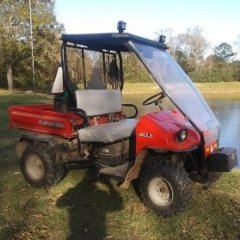
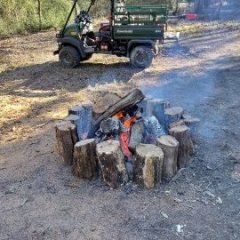
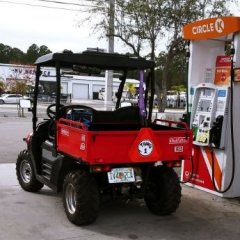




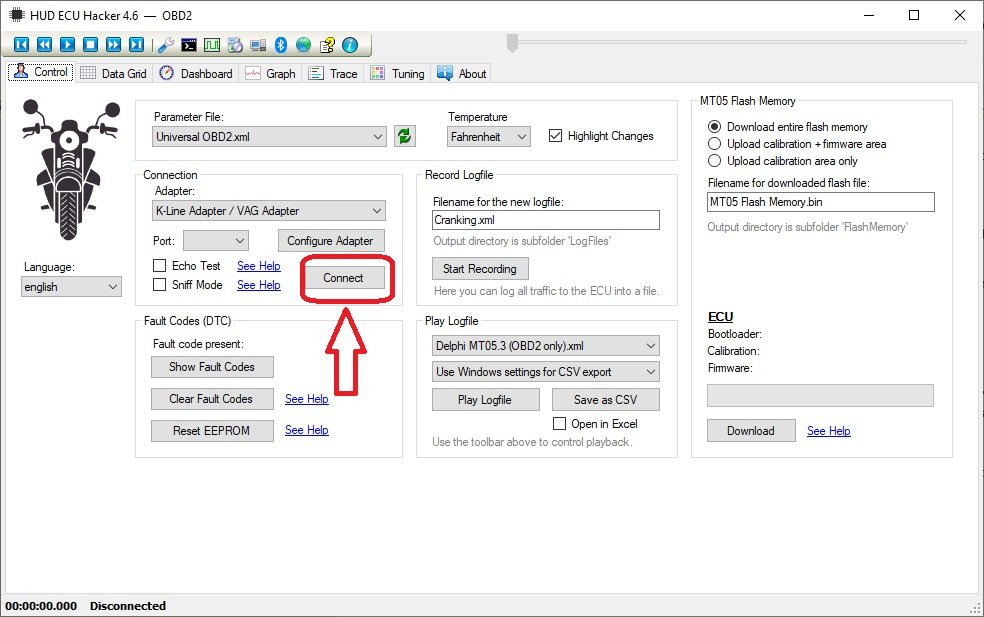






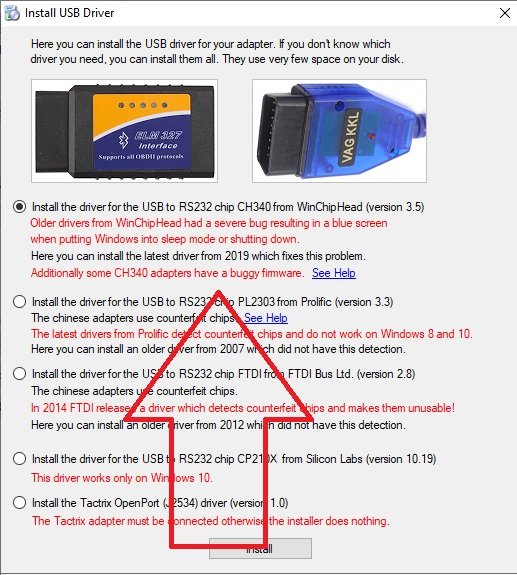




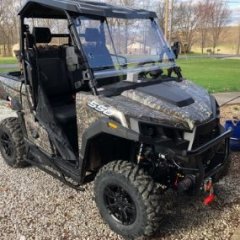

.thumb.jpeg.066fe53fd45b5795c37b2d989ac3a506.jpeg)



